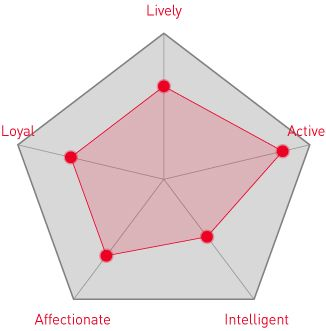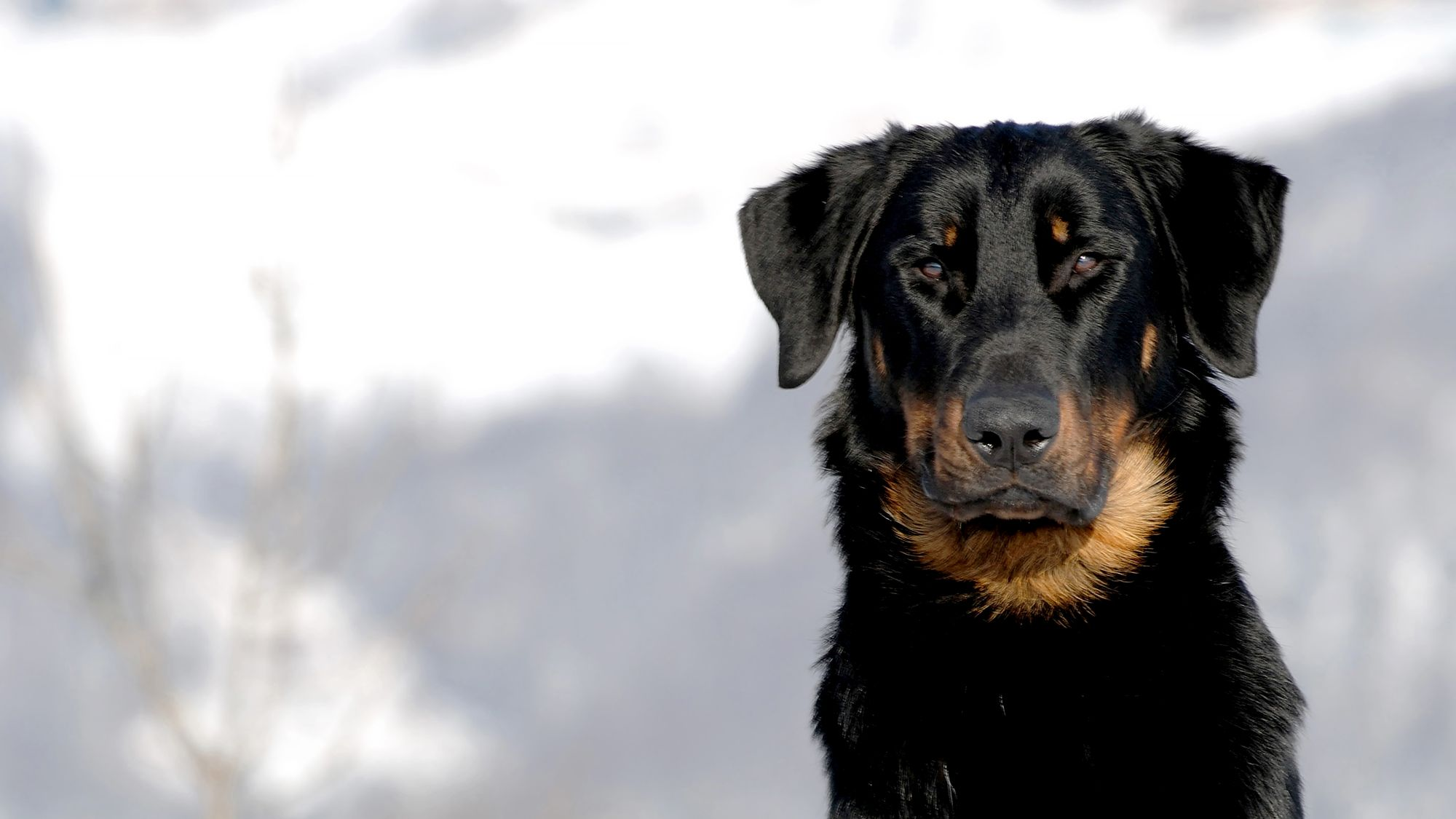
Let's talk Aidis
Although one of the more uncommon breeds, the Aidi is a true original. Their thick bushy coat is soft to the touch and covers a strong, athletic body developed from years spent in the mountains of Morocco, where the Aidi refined their skills as a hardy companion of the nomadic Berber peoples and guarder—of livestock, yes, but mostly of the homefront (Aidi means “dog” in Berber). More domestic sorts these days, these faithful sidekicks have proven themselves a super addition to active families wherever they may roam.Official name: Aidi
Other names: Atlas Mountain Dog, Atlas Shepherd Dog, Berber Dog, Kabyl Dog
Origins: Morocco

| Drooling tendencies |
|
Warm weather? |  |
| Shedding level |  |
Suited to apartment living? | |
| Energy level (high, low, medium) *: | High | Family pet? * |
|
| Compatibility with other pets |  |
Can stay alone?* |
* We advise against leaving pets alone for long stretches. Companionship can prevent emotional distress and destructive behaviour. Speak to your veterinarian for recommendations.
Every pet is different, even within a breed; this snapshot of this breed’s specifics should be taken as an indication.
For a happy, healthy and well-behaved pet, we recommend educating and socialising your pet as well as covering their basic welfare, social and behavioural needs.
Pets should never be left unsupervised with a child.
All domestic pets are sociable and prefer company. However, they can be taught to cope with solitude from an early age. Seek the advice of your veterinarian or trainer to help you do this.


| Baby age: | Birth to 2 months |
| Puppy age: | 2 to 15 months |
| Adult age: | 15 months to 5 years |
| Mature age: | 5 to 8 years |
| Senior age: | from 8 years |

1/7
Get to know the Aidi
All you need to know about the breed
Healthy and hardy are super aspects to look for in any breed and the endearing Aidi embodies both. The breed comes from the Atlas Mountains of Morocco, a rugged range lying in Northwest Africa. Although little known on the western side of the Atlantic, the medium-sized Aidi dog enjoys a solid reputation in their home country and remains a fan favorite.
The Aidi’s bushy tail and fluffy coat are just some of their upsides, not to mention a slight yet strong build and an always-doting face. The Aidi temperament is a fabulous one, too: With a heritage as a guardian dog, their favorite pastime still seems to be keeping watch over their people. They are a furry BFF, for sure.
That said, the Aidi breed has a huge level of intelligence and confidence, along with an independent side. Time in the mountains by themselves developed their capabilities well. They’re keenly alert, a winning trait whether out in the field or signaling the arrival of the delivery person.
Robust health is a part of the package for the Aidi as well, who is not known to suffer from any one malady in particular. Look out though for problems with hips and elbows, a common ailment with very active dogs like the Aidi. Overuse can at times take its toll on a dog’s joints.
When it comes to fitting into the family, this super breed is high on the list since they get along with humans and non-human members of the household as well.

2/7
2 facts about Aidis
1. Best-kept secret
Although the Aidi has existed for centuries, they are found in abundance in the mountains of Morocco where they are devoted dogs of semi-nomadic peoples. They came into prominence in the 1960s but are still not recognised by the American Kennel Club of America.
2. I don’t do sheep
The very hardy and rustic Aidi has traditionally been used as a protector—of their owner and their respective flock. But due to the part of the world from which they hail, they have only ever guarded flocks that don’t include sheep. The original 1963 breed standard was written by the FCI for the Atlas Sheepdog, but then amended in 1969. The Aidi dog is not a herding animal but used mostly to keep watch over the homefront and for other types of livestock.
History of the breed
The Aidi started life in the Atlas Mountains, a vast range that stretches over northwest Africa. The breed has existed there for centuries accompanying nomadic Berber peoples as protectors from predators and even strangers. As faithful watchdogs who stood over flocks, the Aidi dog has become known for their steadfast manner. As a result, this is a breed that bonds strongly with family, which includes the furry members as well.
The Aidi is said to have a shared history with the Pariah dog, a breed that has also existed for centuries alongside nomadic peoples in Asia, as their appearance is somewhat similar. Although the very intelligent Aidi still lives in large numbers in the mountains of Morocco, they’ve also become more domesticated, prized for their loyalty and protection on the homefront.
The Aidi was recognised by the Fédération Cynologique Internationale in 1963 and by the United Kennel Club in 2006.

4/7
From head to tail
Physical characteristics of Aidis
1. Ears
Ears are medium length, carried half dropped on head, slightly rounded tips.
2. Head
Strong, cone-shaped head.
3. Body
Very solid, powerful body, sinewy musculature.
4. Tail
Furry, well-plumed tail.
5. Coat
Thick bushy, soft coat.

5/7
Things to look out for
From specific breed traits to a general health overview, here are some interesting facts about your Aidi
6/7
Caring for your Aidi
Grooming, training and exercise tips
Good grooming is essential for any dog, and the Aidi is no exception. For a dog from Africa who was bred in the blazing sun, having a long, bushy coat may be an oddity but it has served them well as protection from predators and as an insulating layer. They’ll shed it twice a year anyway, in the spring and autumn when they moult and the dead tresses are replaced by a new coiffure.As a watchdog raised in rugged mountainous terrain, the Aidi is used to constant exercise. An owner of this intense breed will want to keep up with their routine. And although the dog can fit into an urban environment, the best surroundings are those that give the dog space, with regular walks and runs a part of their active lifestyle. Stubborn sorts (at times), training the Aidi can be a process:
They were bred to watch over family and flock so are used to getting things done solo. Approach them with reassurance and you’ll be best pals sooner rather than later. The Aidi can also be quite wary of strangers so starting on training early is a must for this very affectionate breed.
7/7
All about Aidis
The Aidi breed reaches back many centuries, starting life on the vast plains of Morocco where they are still used by nomadic peoples as a companion. Given their background, the Aidi does best in an outdoor environment instead of an apartment or smaller space. Dogs can adapt, as long as they have their people by their side, but the Aidi will thrive best if they are given room to roam. Safely, of course!
Despite their storied history, the Aidi is not universally recognised by all of the governing bodies in the canine world. The American Kennel Club in the United States has yet to add the breed to their roster of 197; the Aidi is recognised though by the Dog Registry of America and the American Canine Association, and in Europe by the Fédération Cynologique Internationale and the United Kennel Club in England.
Read more on this topic


How to adopt a dog

Things to consider before getting a dog
Sources
1 - Veterinary Centers of America https://vcahospitals.com/
2 - Royal Canin Dog Encyclopaedia. Ed 2010 and 2020
3 - Banfield Pet Hospital https://www.banfield.com/
4 - Royal Canin BHN Product Book
5 - American Kennel Club https://www.akc.org/